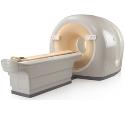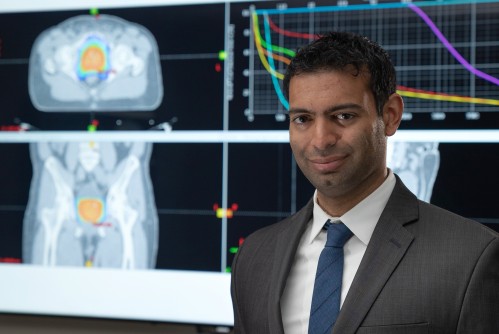Robotics lab, already a 5-time RoboCup champ, will bring its newest invention to international competition in July

Mechanical engineers at the UCLA Samueli School of Engineering have developed a full-sized humanoid robot with first-of-its-kind technology.
Named ARTEMIS, for Advanced Robotic Technology for Enhanced Mobility and Improved Stability, the robot is scheduled to travel in July to Bordeaux, France, where it will take part in the soccer competition of the 2023 RoboCup, an international scientific meeting where robots demonstrate capabilities across a range of categories.
The robot was designed by researchers at the Robotics and Mechanisms Laboratory at UCLA, or RoMeLa, as a general-purpose humanoid robot, with a particular focus on bipedal locomotion over uneven terrain. Standing 4 feet, 8 inches tall and weighing 85 pounds, it’s capable of walking on rough and unstable surfaces, as well as running and jumping. ARTEMIS is able to remain steady even when strongly shoved or otherwise disturbed.
During tests in the lab, ARTEMIS has been clocked walking 2.1 meters per second, which would make it the world’s fastest walking humanoid robot, according to the UCLA researchers. It is also believed to be the first humanoid robot designed in an academic setting that is capable of running, and only the third overall.
The robot’s major innovation is that its actuators — devices that generate motion from energy — were custom-designed to behave like biological muscles. They’re springy and force-controlled, as opposed to the rigid, position-controlled actuators that most robots have.
“That is the key behind its excellent balance while walking on uneven terrain and its ability to run — getting both feet off the ground while in motion,” said Dennis Hong, a UCLA professor of mechanical and aerospace engineering and the director of RoMeLa. “This is a first-of-its-kind robot.”
Another major advance is that ARTEMIS’ actuators are electrically driven, rather than controlled by hydraulics, which uses differences in fluid pressure to drive movement. As a result, it makes less noise and operates more efficiently than robots with hydraulic actuators — and it’s cleaner, because hydraulic systems are notorious for leaking fluids.
ARTEMIS’ ability to respond and adapt to what it senses comes from its system of sensors and actuators. It has custom-designed force sensors on each foot, which help the machine keep its balance as it moves. It also has an orientation unit and cameras in its head to help it perceive its surroundings.
To prepare ARTEMIS for RoboCup, student researchers have been testing the robot on regular walks around the UCLA campus. In the coming weeks, they will fully test the robot’s running and soccer-playing skills at the UCLA Intramural Field. Researchers also will evaluate how well it can traverse uneven terrain and stairs, its capacity for falling and getting back up, and its ability to carry objects. RoMeLa’s Twitter account is regularly sharing information about the robot’s testing results and posting the routes for its campus walks, giving Bruins the chance to catch ARTEMIS in action and chat with researchers.
“We’re very excited to take ARTEMIS out for field testing here at UCLA and we see this as an opportunity to promote science, technology, engineering and mathematics to a much wider audience,” Hong said.
Taoyuanmin Zhu and Min Sung Ahn, both of whom recently earned doctorates in mechanical engineering at UCLA, developed ARTEMIS’ hardware and software systems, respectively.
RoMeLa, which has been making humanoid robots for more than two decades, has had earlier robots win the RoboCup competition five times already; the engineers are hoping ARTEMIS brings home trophy number six.
ARTEMIS’ development was funded in part by 232 donors who contributed more than $118,000 through a UCLA Spark crowdfunding campaign. Additional support came from an Office of Naval Research grant.
ARTEMIS Fun Facts
- Named in honor of the Greek goddess of the hunt, wild animals, chastity and childbirth, RoMeLa members refer to ARTEMIS as “she.”
- RoMeLa researchers have joked that ARTEMIS could also stand for “A Robot That Exceeds Messi In Soccer.”




_6e63a8c8-783d-4cb3-ac8a-826fb1dc635c-prv.jpg)

